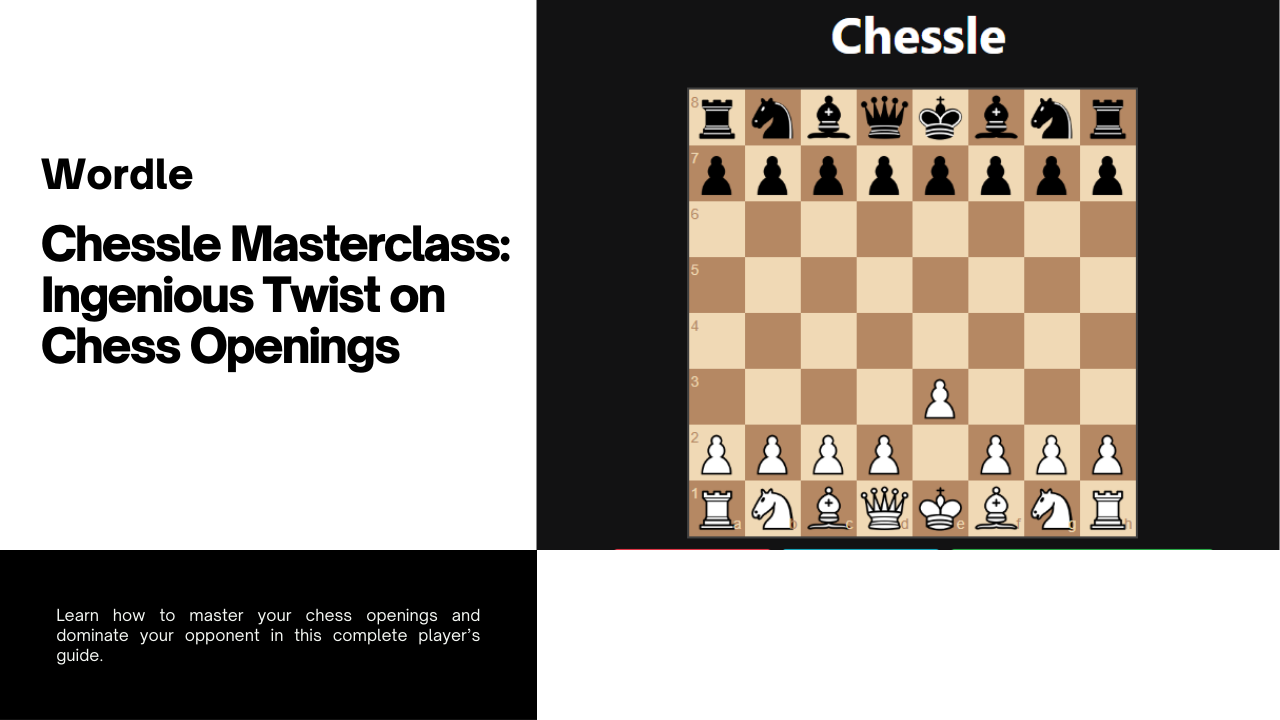Introduction
In the vast universe of chess, where strategy and tactics collide, a new star has emerged: Chessle. This innovative variant combines the timeless game of chess with the addictive mechanics of Wordle, creating a delightful fusion that challenges players’ minds in unexpected ways. In this comprehensive guide, we’ll delve into the intricacies of Chessle, explore its unique features, and equip you with the tools to become a formidable Chessle player.
What Is Chessle?
At its core, Chessle marries the elegance of chess with the word-guessing thrill of Wordle. Each move involves not only positioning your pieces strategically but also constructing words from the letters associated with those pieces. Imagine maneuvering your knight to form “KNIGHT” or placing your queen to spell “QUEEN.” The possibilities are as vast as the chessboard itself.
Also Read: What is WordFinderX and How to Play It: A Beginner’s Guide
The Chessle Board
The Chessle board retains the classic 8×8 grid, but with a twist. Instead of traditional algebraic notation, each square now displays a letter. These letters correspond to the pieces occupying them. For instance:
- P for pawn
- R for rook
- N for knight
- B for bishop
- Q for queen
- K for king
Wordle Moves
- Word Placement: When moving a piece, consider the letters it covers. Strategically position your pieces to form meaningful words. For example, advancing your pawn to e2 could spell “OPEN.”
- Word Score: Each word you create contributes to your overall score. Longer words yield more points. A well-placed “KNIGHT” might earn you a knight’s move ahead on the board.
- Word Constraints: Be mindful of the constraints. You can’t form words that cross each other diagonally or horizontally. Plan your moves wisely!
Mastering Chessle Openings
1. The Queen’s Gambit (Wordle Edition)
- Objective: Develop your queen while constructing high-scoring words.
- Example: Move your queen to d4, forming “QUEEN” and controlling the center.
2. The Sicilian Defense (Lexical Variation)
- Objective: Create defensive words while challenging your opponent’s vocabulary.
- Example: Play e5, spelling “DEFEND.”
3. The Ruy López (Linguistic Exchange)
- Objective: Exchange pieces while weaving linguistic masterpieces.
- Example: Nf3, revealing “EXCHANGE.”
Strategies for Success
- Word Priority: Prioritize longer words. They grant you extra moves and enhance your position.
- Double Threats: Aim for moves that both threaten your opponent and form words simultaneously.
- Bluffing: Sometimes, a seemingly random word can distract your opponent. Use it strategically.
Advanced Tactics
- En Passant Wordle: Capture an opponent’s pawn en passant while spelling a word. Double victory!
- Promotion Poetry: When a pawn reaches the eighth rank, promote it to a queen while composing a poetic word.
Conclusion
Chessle is more than a game; it’s a linguistic adventure. As you master openings, weave words, and outwit opponents, remember that the true genius lies in balancing strategy and lexicon. So, grab your Chessle board, spell your destiny, and embark on this thrilling journey where chess meets language. May your moves be eloquent, your victories sweet, and your opponents utterly baffled. Happy Chessling! 🌟👑📜

